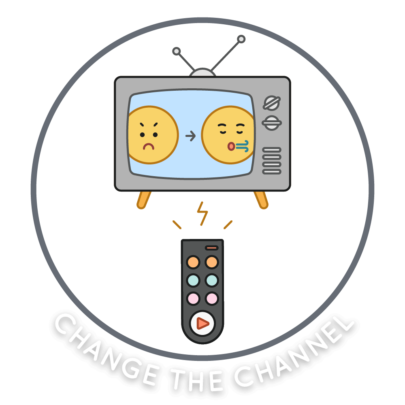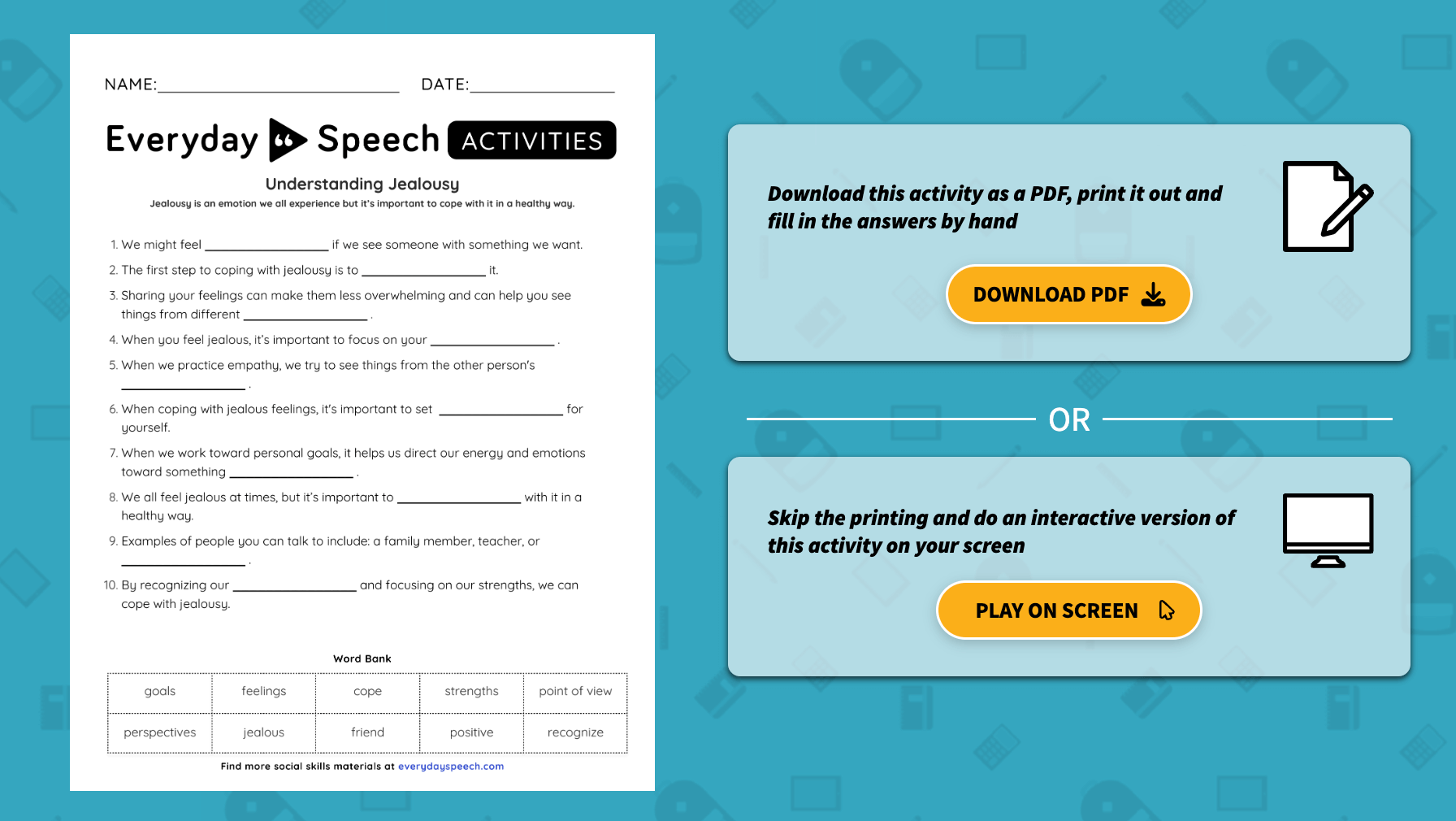
Introduction
Jealousy is a complex emotion that can significantly impact students’ interactions and self-esteem, and that is why its understanding is crucial. Many high school students struggle with jealousy as they are navigating a period of intense social comparison and identity formation. By addressing jealousy, we can equip our high school students with the right tools to recognize, understand, and overcome this challenging emotion, fostering a most positive and supportive school environment.
Why Teach Emotional Recognition and Understanding Jealousy in High School
High school is a pivotal period for emotional and social development. Students are learning to navigate complex social networks, form their identities, and establish their values. Teaching emotional recognition helps students identify and articulate their feelings, leading to better self-awareness and self-regulation. When students understand their feelings, they are less likely to act out impulsively and more likely to engage in constructive problem-solving.
Jealousy, in particular, can be a disruptive force in high school. It can lead to conflicts, reduce self-esteem, and hinder academic and social success. By teaching students to recognize and manage jealousy, we help them build resilience and empathy, which are essential for overcoming jealousy. This not only benefits the students individually but also contributes to a healthier, more collaborative school culture.
Lesson Plan: Understanding Jealousy
Objective
Students will understand the feeling of jealousy, recognize its triggers, and develop strategies to manage and overcome jealousy in their lives.
Materials Needed
-
Interactive worksheet “Understanding Jealousy” (see below)
-
Pens or computers to play on screen
Introduction (10 min)
- Begin with a brief discussion on feelings and their impact on our behavior. Ask students to share some feelings they commonly experience. Here are a few questions to prompt this discussion:
– What do you usually do when you are feeling bored? What things do you find boring?
– When was the last time you felt totally exhausted? What made you feel so tired?
– Do you often feel stressed? What types of things do you worry about?
– What was the last time you were surprised? What made you feel surprised?
– How did you feel yesterday? What types of emotions did you experience? -
Introduce jealousy as a specific emotion and explain that it’s a natural feeling that everyone experiences at times.
-
Highlight the importance of recognizing and managing jealousy to maintain healthy relationships and personal well-being.
Understanding Jealousy (15 minutes)
- Define jealousy and differentiate it from envy. Explain that if you’re worried you may lose something to another person, you’re experiencing jealousy. But if you want what someone else currently has that you don’t, that’s envy.
- Discuss common triggers of jealousy among high school students, such as academic achievements, friendships, romantic relationships, and social media comparisons.
- Use real-life examples or relatable scenarios to illustrate how jealousy can manifest and affect behavior.
Interactive Worksheet Activity (20 minutes)
- Distribute the “Understanding Jealousy” worksheet. This worksheet contains various scenarios where students need to fill in the blanks using words from the provided word bank.
- Read through one scenario together as a class and discuss possible answers to ensure students understand the task.
- Allow students to work individually or in pairs to complete the worksheet. Encourage them to think critically about each scenario and how they would feel and react in similar situations.
Unlock the Understanding Jealousy Interactive Worksheet
by signing up for a free trial today – no credit card required!
Access the Activity Here!
Instant access to thousands of no-prep social skills activities, over 800+ video lessons, and engaging games designed to enhance learning and development.
Group Discussion (10 minutes)
-
Once students have completed the worksheet, bring the class together for a group discussion. Ask volunteers to share their answers and reflections on the scenarios.
-
Discuss common themes and insights. Highlight constructive strategies for managing jealousy, such as open communication, self-reflection, and focusing on personal growth.
-
Emphasize the importance of empathy and understanding others’ perspectives to reduce feelings of jealousy.
Reflection and Journaling (5 minutes)
- Ask students to take out their journals or notebooks and write a brief reflection on what they learned about jealousy. Prompt them to consider how they can apply these insights in their own lives.
- Suggest that they write down one specific strategy they will use the next time they feel jealous.
Lesson Wrap-Up (5 minutes)
- Summarize the key points discussed in the lesson. Reinforce the idea that jealousy is a normal emotion but can be managed with the right strategies.
- Encourage students to continue exploring their emotions and to seek support from trusted adults or peers when dealing with difficult feelings.
- Remind them that understanding and overcoming jealousy is a step toward becoming more emotionally intelligent and resilient individuals.
Conclusion
Teaching high school students how to overcome jealousy is a vital component of their social and emotional development. By recognizing jealousy and learning to manage it effectively, students can improve their relationships, self-esteem, and overall well-being. This lesson plan is a structured approach to help students understand jealousy, identify its triggers, and develop strategies to cope with it.
Sample Video
Students learn best from watching real students their own age model skills. Try out this sample video lesson. We offer our entire Social-Emotional Learning platform free for 14 days here!
Related Blog Posts:
Teaching High School Students to Understand and Manage Emotions
Enhancing Dialogue: Conversation Skills Practice for High Schoolers
Interactive Feelings Identification Game for High School


